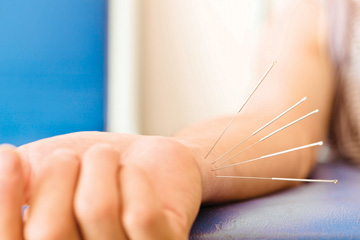Many patients are more afraid of post-op nausea and vomiting (PONV) than they are of the surgery itself. That means a single incident of PONV can wreak havoc on your patient satisfaction scores and even prevent patients from scheduling critical surgeries in the future. Luckily, if you identify whether a patient is at a greater risk for this complication well before their procedure, you have plenty of options — including antiemetics, acupressure, aromatherapy and low-flow anesthesia — to prevent it.
- Home
- Article
Preventing PONV in High-Risk Patients
By: Robert W. Simon, DNP, MS, CRNA, CHSE, CNE
Published: 8/23/2021
Screen thoroughly, set clear expectations and ask key questions to keep patients nausea-free.
Identifying risk factors
PONV prevention starts with patient screening (see “How to Spot Potential PONV Cases”). If you’re not looking for risk factors, you’re not going to find any. On the other hand, you can learn a lot during the initial pre-op interview. Patients don’t want to feel sick after surgery and tend to be honest about their history of nausea and vomiting. If you simply ask, they will usually reveal what you need to know to assess their risks for PONV. If they’ve had surgeries in the past, they’ll be more likely to tell you about went wrong instead of all the things that went right. So, if they’ve ever experienced PONV, they’ll let you know.
If you have access to the patient’s electronic health record, check their health history to see if they’ve had past issues with PONV. Many areas now have Health Information Exchanges where all the hospitals in the area share access to the records of any patient who has visited one of the area’s facilities (unless the patient specifically opts out).
During the screening process, remember to not only ask about prescription medications but also about any supplements patients take. Reason: Some herbal supplements such as valerian, kava and chamomile can amplify the effects and side effects of narcotics, placing patients at a potentially higher risk for PONV.
For my doctoral dissertation, I focused specifically the importance of screening for PONV in pediatric patients. Children are twice as likely to experience PONV as adults, so this is an issue of critical importance. Pediatric PONV is also more likely to lead to overnight admission, which is both costly to the facility and upsetting for children and families.
In our facility, we found that we were not routinely screening for PONV history in pediatric patients. In response, we created a PONV history tab in the preanesthetic data forms, and put a “hard stop” in the forms so that the screening provider couldn’t go on to the next screen without taking a PONV history. Then we reviewed the charts of patients who had surgery two months before and two months after we implemented this change. We discovered that we were able to reduce rates of PONV by 22% with this simple, low-cost intervention. It also reinforced the importance of preoperative screening.
Identifying risk factors
PONV prevention starts with patient screening (see “How to Spot Potential PONV Cases”). If you’re not looking for risk factors, you’re not going to find any. On the other hand, you can learn a lot during the initial pre-op interview. Patients don’t want to feel sick after surgery and tend to be honest about their history of nausea and vomiting. If you simply ask, they will usually reveal what you need to know to assess their risks for PONV. If they’ve had surgeries in the past, they’ll be more likely to tell you about went wrong instead of all the things that went right. So, if they’ve ever experienced PONV, they’ll let you know.
If you have access to the patient’s electronic health record, check their health history to see if they’ve had past issues with PONV. Many areas now have Health Information Exchanges where all the hospitals in the area share access to the records of any patient who has visited one of the area’s facilities (unless the patient specifically opts out).
During the screening process, remember to not only ask about prescription medications but also about any supplements patients take. Reason: Some herbal supplements such as valerian, kava and chamomile can amplify the effects and side effects of narcotics, placing patients at a potentially higher risk for PONV.
For my doctoral dissertation, I focused specifically the importance of screening for PONV in pediatric patients. Children are twice as likely to experience PONV as adults, so this is an issue of critical importance. Pediatric PONV is also more likely to lead to overnight admission, which is both costly to the facility and upsetting for children and families.
In our facility, we found that we were not routinely screening for PONV history in pediatric patients. In response, we created a PONV history tab in the preanesthetic data forms, and put a “hard stop” in the forms so that the screening provider couldn’t go on to the next screen without taking a PONV history. Then we reviewed the charts of patients who had surgery two months before and two months after we implemented this change. We discovered that we were able to reduce rates of PONV by 22% with this simple, low-cost intervention. It also reinforced the importance of preoperative screening.

PONV risk factors vary considerably between children and adults. Key risk factors for adults:
• Female gender
• Non-smoker
• Previous history of PONV
• Previous history of motion sickness
• Use of any kind of narcotics intraoperatively
• Surgery duration greater than 45
to 60 minutes, and
• Procedure type (gynecologic, urologic, breast and ophthalmic surgeries present the greatest risks).
Key risk factors for children:
• Family history of PONV
• History of motion sickness
• Parental history of motion sickness
• Procedure type (orthopedic, urologic and ophthalmic surgeries present the greatest risks)
•
Patient age of three or older, and
• Surgical duration of greater than 30 minutes.
— Robert W. Simon
Preventative steps

When you identify a patient at high risk for PONV, employ a combination therapy that includes at least two medications — a steroid such as dexamethasone and an antiemetic such as ondansetron. Research indicates steroids “shrink” the blood brain barrier or limit the inflammation process as well as other potential chemical triggers of PONV. Also make sure the patient is adequately hydrated. If they come in NPO, use IV fluids to ensure proper hydration. You can apply a scopolamine patch to patients in pre-op or, with extremely high-risk cases (patients with three or more risk factors and/or a history of PONV), up to 24 hours before surgery.
Consider using an anesthetic less likely to cause PONV. For high-risk patients, inhalational agents such as nitrous, sevoflurane, desflurane and isoflurane have been shown to increase the risk of PONV. Regional anesthesia and total intravenous anesthesia decrease that risk. Use low-dose propofol, avoid nitrous and consider using antiemetics such as scopolamine, sodium citrate-citric acid or metoclopramide based on your screening tool and the patient’s history.
Antiemetics have various mechanisms of action that block the different chemicals in the body that can cause a patient to vomit. Scopolamine blocks acetylcholine, ondansetron is a serotonin receptor antagonist, sodium citrate-citric acid neutralizes stomach acidity and metoclopramide is a dopamine antagonist. The prevention effect of two or more antiemetics used in combination is greater than one acting alone.
The following non-pharmacological interventions have also been proven to alleviate PONV:
• Aromatherapy. With this alternative but effective intervention, patients are typically given inhalers that contain natural essential oil scents such as lavender, peppermint, ginger and spearmint — or a blended formula. The inhalers are cheap and disposable, and the nausea-reducing effects can be felt for hours after surgery.
• Acupuncture. This technique is generally applied to pressure points on the wrist, typically the pericardium 6 (PC6) point, by someone who is trained in acupuncture. I’ve worked with anesthesiologists who were trained in acupuncture as pain management specialists, as well as other providers trained in osteopathic or homeopathic medicine, and the results of these non-traditional tactics has been impressive.
Once the patient, especially the high-risk patient, reaches the PACU, avoid moving them from the stretcher to the bed too fast. Remind them to sit up very slowly and consider using 25 mg of Benadryl as a preemptive measure.
Some providers also use soothing music in the post-op area to help reduce patient anxiety. However, anxiety alone is not a risk factor for PONV, so soothing music might not prove effective in reducing PONV. Above all, always make it a point to ask the patient if they’re feeling sick. This provides the opportunity to implement preventative steps in a timely manner and reinforces the patient’s confidence that you care about their comfort.
Setting expectations
You can identify high-risk patients and implement the proper preventative protocols accordingly, but some patients will still experience PONV. That’s why it’s important to set patient expectations right from the start. It’s what we do with pain; why wouldn’t we do it with PONV? I tell my patients, “We’ll do our best to make sure you wake up without PONV, but I can’t tell you that we’ll be able to eliminate the risk entirely. I’ll do everything in my power to prevent it, but if it happens, please let us know.”
From the day before patients enter your facility until after they walk out the door, there are plenty of opportunities to prevent or alleviate PONV. You should treat extremely high-risk patients with a scopolamine patch up to 24 hours before the procedure, follow proper screening protocols so you’re ready to act in a critical time frame, consider alternative interventions, set proper expectations and remember to ask patients directly if they’re nauseous. Yes, you can do everything right and still have your patient wake up feeling sick. But more often than not, if you take all of the steps outlined above, you will prevent patients from feeling nauseous and unsatisfied with the care they received. OSM
.svg?sfvrsn=be606e78_3)
.svg?sfvrsn=56b2f850_5)